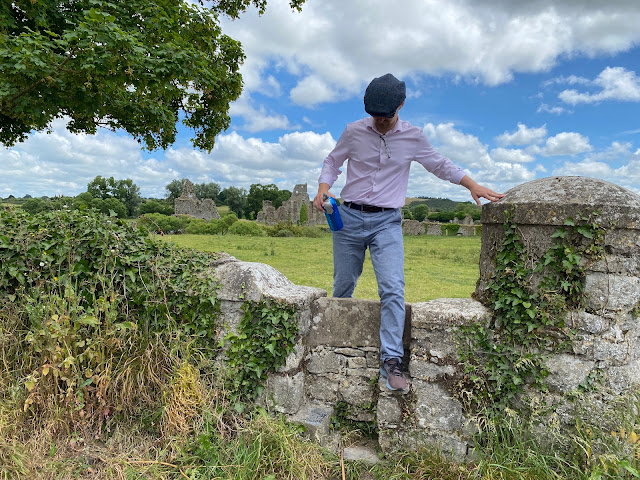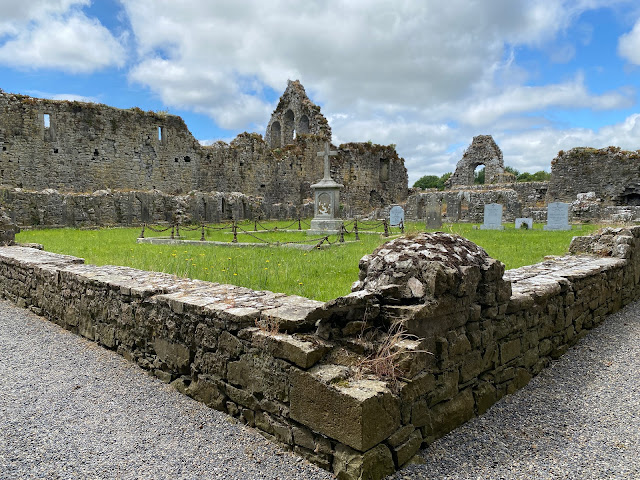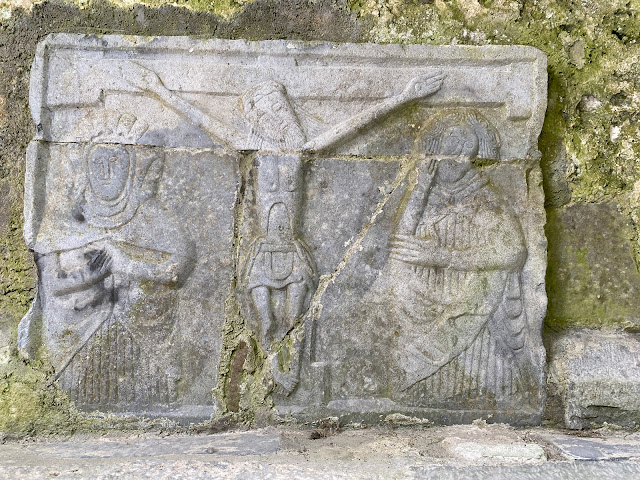A Road-trip for Ruins
In the name of (more) “off the beaten path”, today we plan to see two relatively remote ruins. The first is Athassel Priory outside of Tipperary (yes, that Tipperary). From the apartment, it was just under two hours.
The priory was so off-the-beaten-path that we had to park at the entrance to a private residence (off to the side and out of the way, of course) because there are seldom any shoulders on Irish roads and where we were, it was even single-track part of the time. Once parked, we had to climb over a stone wall (clearly designed for humans to walk over…steps and all…but designed to keep the cows in.) and walk across a field. No red carpets here.
The largest medieval priory in Ireland, Athassel stretches over a 4-acre site. The priory dates back to the late 12th century when it was founded by the Augustinians. Hubert de Burgh was prior at Athassel around 1221. The original buildings were altered and renovated over the next 300 years. The priory was burnt twice, once in 1329 by Brian King of Thomond and again in 1581 by John Fitzgerald of Desmond. A large town had grown up around the priory but was destroyed during the two raids. The priory was finally dissolved in 1537 and the lands given to Thomas Butler, 10th Earl of Ormond, who neglected the abbey, and it subsequently fell into ruin.
Panoramas
Contrary to the off-the-beaten-path intentions, the Rock of Cashel turned out to be quite a tourist attraction. Tickets, gift shop; the works.
Also known as Cashel of the Kings and St. Patrick's Rock, the Rock of Cashel was the traditional seat of the kings of Munster for several hundred years prior to the Norman invasion. In 1101, the King of Munster, Muirchertach Ua Briain, donated his fortress on the Rock to the Church.
This is now home to a remarkable collection of Celtic art and medieval architecture. Few remnants of the early structures survive; the majority of buildings on the current site date from the 12th and 13th centuries.
According to local legends, the Rock of Cashel originated in the Devil's Bit, a mountain 20 miles north of Cashel when St. Patrick banished Satan from a cave, resulting in the Rock's landing in Cashel. Cashel is reputed to be the site of the conversion of the King of Munster by St. Patrick in the 5th century.
Panoramas








































Comments